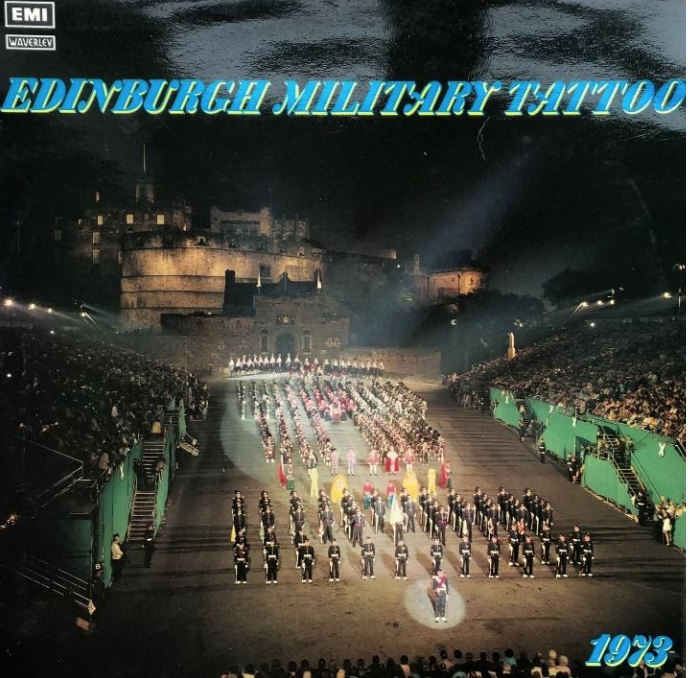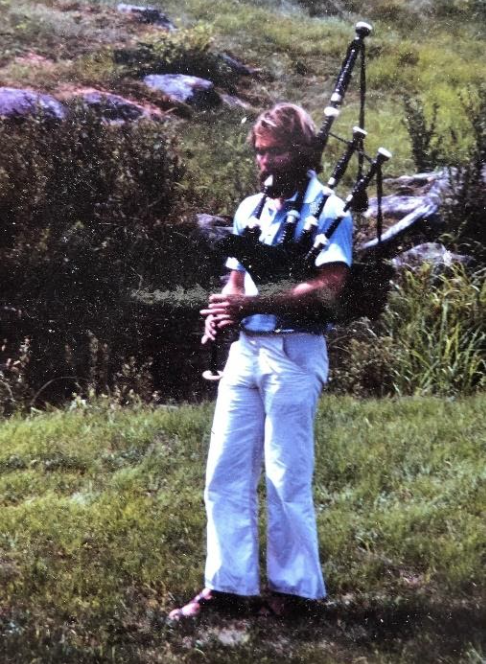
Greg er dansk gift, australsk stadsborger, arkitekt og blev medlem af Heather Pipes and Drums i 1985
So what is it that draws an Aussie to the world of bagpiping?
Without going into too much historical detail, a short background to Scottish migration to Australia is relevant.
After the convict era around the 1850s free settlers escaping difficult conditions in the United Kingdom migrated to Australia’s East coast. (No, I’m not of convict descendance.)
Settlements were established first along the coastal rivers from where boat access to the fertile plains on the foothills of the Great Dividing Range was possible. Access enabled “timber getters” to start a thriving industry felling rainforest.
After this period opportunities in gold mining as well as farming and grazing in the bush were possible. Scottish migrants, amongst others my mother’s Elloitt family, moved to the northern frontier on top of the range in New South Wales to clear dense eucalypt forest in aboriginal country where dingoes and foot rot tested any white man or woman. Hometown Glen Innes is just one of many centres established in the New England around this era. An annual Celtic Festival celebrates the towns strong Scottish ties.
My first memories of bands and bagpipes from the age of 6 was the sight of Glen Innes Pipes and Drums marching down the main street at the Rose Festival. In a small country town these annual Festivals were always a drawcard. To see a procession of floats parading through the streets showing off everything from rural produce to local art attracted the whole town. The pipe band would always lead the procession. I was hooked at first sight and persuaded my parents to arrange tuition with one of the pipers in the band. Weekly lessons for 1½ years advanced me to “Scots Wha Hea” and “Highland Laddy” on the practise chanter and lessons included occasional attempts at blowing the pipes.
Moving to Sydney to start Secondary school at Scots College boosted the learning curve. Practice every day with the help of older students, tuition with an external instructor once a week as well as many band arrangements filled a lifestyle which revolved around playing. The band participated in all kinds of public occasions, including marches in the city to commemorate Anzac Day and many other events. Regular Friday practices as a massed band with around 90 players was a good alternative to cadets (a type of schoolboy military service) which was mandatory for the rest of the students. Mini band competitions at Country Highland Gatherings during the summer holidays were always capped off with the showing of the annual Edinburgh Tattoo on New Years day.
About halfway through secondary school the band was invited to participate in the Tattoo, as the first school band ever. Local parents united to arrange our own Highland Gathering to create funds for the tour and after months of preparation, we arrived for a weeks training camp with the Scottish Regiments who regularly participated in the tattoo. Amongst others were the Royal Scots Dragoon Guards who had just had success with Amazing Grace on all the hit lists. They were our idols. We were accommodated at the top of the castle and our rooms had views across Edinburgh. We had the time of our lives with evening performances on the esplanade and time off to explore the city during the day. While in Edinburgh I took time to search after Elloitt family history. My uncle had always told that the Eloitts were horse thieves on the West Coast which I never proved but the clan were nevertheless Border Reivers (raiders who sided with both the English and Scottish) based in Lilydale, close to Hadrian’s Wall on the border which was contested over the centuries. This tour to Edinburgh was a once in a lifetime experience.

My next bagpipe adventure was an attempt at making a set of bagpipes. In the last year of my Bachelor of Architecture degree there were changes to curriculum allowing students to mix subjects and Industrial Design as an option. I allied my ambitions with Jim, one of the workshop tradesmen who also was interested making a set of bagpipes.
A friend’s cabinet maker boyfriend had several pieces of seasoned African blackwood in storage. He had no plans for this fine timber and there was enough for more than 2 sets of pipes. The 35 pieces were probably intended for the production of woodwind instruments; perfect in size, seasoned, waxed at both ends to prevent cracking and dense.
Making up the tools was possible with Jim’s machine turning expertise. Combing tools for drone decoration and extended drill bits to bore out the drones weren’t a problem, however the conical shape of the chanter required a D bit and after 2 models we didn’t really have the solution. Another challenge was the long bore in the bass drone which required drilling in from both ends. Nevertheless, the pipes worked and the requirement to pass the subject was a short performance in the professor’s office. The bag, made of kangaroo skin the night before the exam was leaking so with the emphasis on “short” I managed to play a couple of melodies and pass the subject thus attaining the last 2 mandatory points before starting graduation project.
These pipes travelled with me for 18 months hitching and working throughout North America and Europe in 1981 – 1982. Packed into a small Qantas bag, separated into component parts and stored in socks, the pipes were strapped to the bottom of my backpack so they could be pulled out on any occasion to play.

After working on summer camp in New York State, I’d planned to continue my working holiday in Europe, starting in Scotland. The homemade chanter hadn’t been a great success so I played on an old Grainger until I visited Sinclair in Edinburgh where I wanted to buy a new chanter. He insisted on seeing my pipes and inspected the internal finish of the bore in the drones. Inspection revealed that the holes in the long section of the bass drone didn’t meet halfway. “That’s disgusting” he commented and continued “wait just a minute, laddie” He disappeared from the front counter into the sealed off workshop and came back some minutes later with a replacement bass drone piece which he gave to me free of charge. He explained that there was a waiting list for chanters but also found a chanter, sold at reduced price because of a knot at the bottom. Grateful for the upgrade I continued my travels.
After returning to Sydney, I joined the Northern Suburbs Pipe Band with a friend from the Uni diving club. I went back to playing my Hardie pipes with plastic band chanters and in 85 moved to Denmark, but that’s another story which many already know.
Jeg vil gerne give STIKKEN videre til Jonas Jacobsen.

Be the first to comment